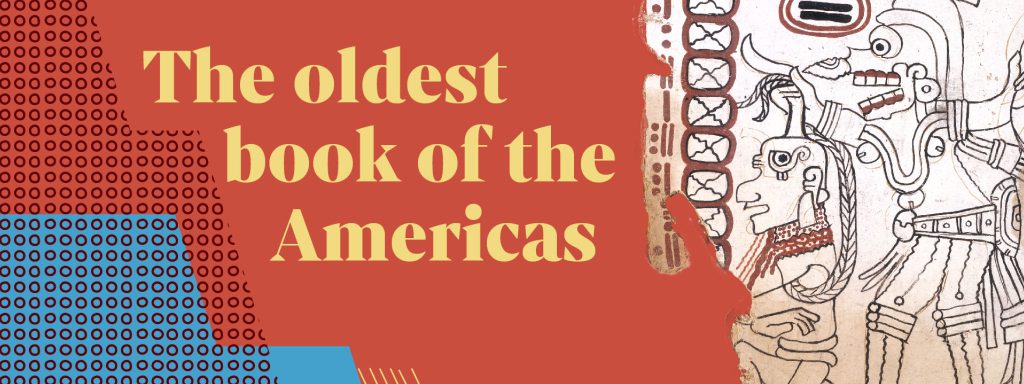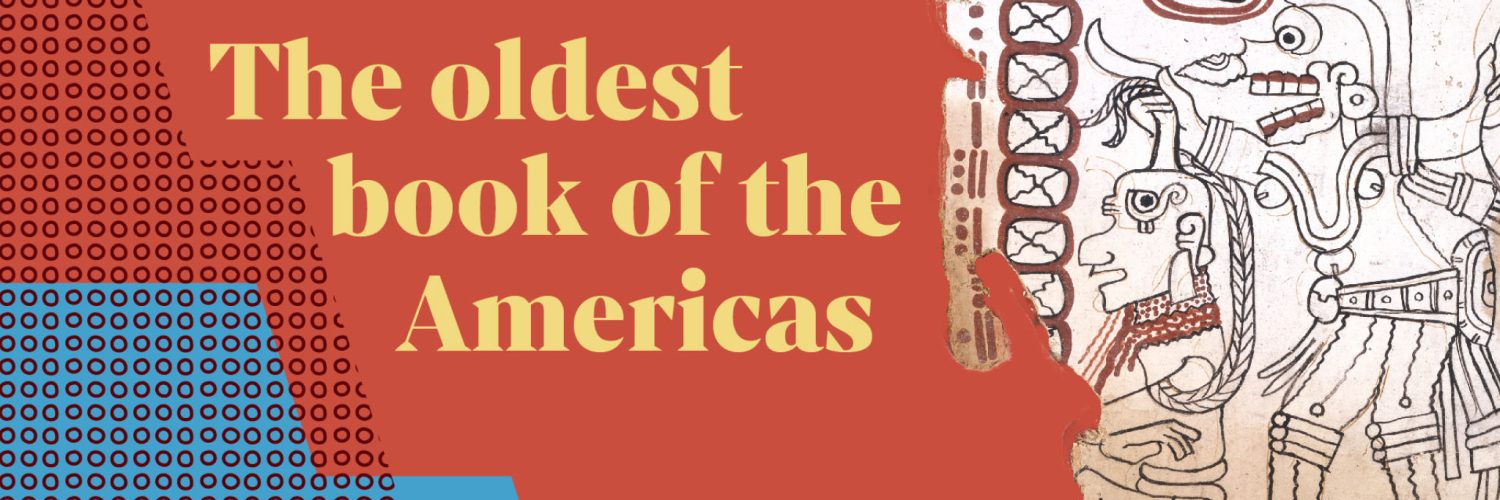
The oldest surviving book of the Americas, Códice Maya de México, is now on view at the Getty Center.
This exhibition is presented in Spanish and English. Esta exhibición se presenta en español y en inglés.
This is the first Getty exhibition where Spanish text leads and English translation follows, creating an inclusive display that reflects the origins of this rare manuscript.
Image:
Page 4 of Códice Maya de México, Maya, circa 1100. Mineral and organic pigments on bark paper prepared with gesso. Biblioteca Nacional de Antropología e Historia, Secretaría de Cultura-INAH-México. All rights reserved.
Created by a single artist, a leading Mayan scholar, this one-of-a-kind document has a fraught history. It is one of four ancient books that were created before the Conquistadors invaded. Found during the 60s preserved in a cave, its miraculous that it survived. The Códice Maya de México was initially denounced as a fake. Yet this highly impressive object took the collaboration of art historians and scientists to authenticate it.
Scientific authentication was performed in 2017 and 2018. With only three other examples to compare it to, it was authenticated through analysis of paper, insect remains and carbon dating. A 2018 a conference presented its findings and resolution thanks to an avalanche of evidence. This is a very complex book, and only 10 pages survive while 10 were lost.
An extremely complicated book, it deals with the movements of Venus over 583+ days. Illustrating four different phases of Venus, and calculating the Venus cycles over 104 years, through this document we see how Maya astronomy was fascinated by the cycles of solar versus planets. Approximately 900 years old, it was made from bark paper and its use of rare pigments such as Maya blue is proof that this was created by an indigenous artist. This book was used and worn out over its 104-year use, and compares to another document 200 years later a Venus almanac.
This is a uniquely surviving object from a time we don’t know all that much about. It has been housed at the National Museum of Anthropology in Mexico City, Mexico, since 2016. It was a challenge to transport this precious and rare and fragile artifact from Mexico to here, given that sound, light, movement and static could damage it.
From the press release:
Ancient Maya scribes recorded prophecies and astronomical observations on the pages of painted books. Although most were lost to decay or destruction, three pre-Hispanic Maya codices were known to have survived, when, in the 1960s, a fourth book that differed from the others appeared in Mexico under mysterious circumstances.
After fifty years of debate over its authenticity, recent investigations using cutting-edge scientific and art historical analyses determined that Códice Maya de México (formerly known as Grolier Codex) is in fact the oldest surviving book of the Americas, predating all others by at least two hundred years.
Around 900 years ago, a Maya scribe made Códice Maya de México, a sacred book that tracked and predicted the movements of the planet Venus. Today it is the oldest book of the Americas, one of only four surviving Maya manuscripts that predate the arrival of Europeans. A remarkable testament to the complexity of Indigenous astronomy, Códice Maya de México is on display in the US for the first time in 50 years.

Códice Maya de México
On view now through January 15, 2023, at the Getty Center.
Make free advance reservations for the Getty Center.
Getty is a leading global arts organization committed to the exhibition, conservation, and understanding of the world’s artistic and cultural heritage. Working collaboratively with partners around the globe, the Getty Foundation, Getty Conservation Institute, Getty Museum and Getty Research Institute are all dedicated to the greater understanding of the relationships between the world’s many cultures. The Los Angeles-based J. Paul Getty Trust and Getty programs share art, knowledge, and resources online at Getty.edu and welcome the public for free at the Getty Center and the Getty Villa.
The J. Paul Getty Museum collects Greek and Roman antiquities, European paintings, drawings, manuscripts, sculpture and decorative arts to 1900, as well as photographs from around the world to the present day. The Museum’s mission is to display and interpret its collections, and present important loan exhibitions and publications for the enjoyment and education of visitors locally and internationally. This is supported by an active program of research, conservation, and public programs that seek to deepen our knowledge of and connection to works of art.
Visiting the Getty Center
The Getty Center is open to a limited number of visitors, in accord with state and local public health guidelines, Tuesday through Sunday, 10 a.m. to 5 p.m. It is closed Mondays, Thanksgiving, December 25 (Christmas Day), and January 1.
Admission to the Getty Center is always free, but in order to allow social distancing, a reservation is currently required for admission. Reservation are available at www.getty.edu/visit or at (310) 440-7300. Parking is $20. The Getty Center is at 1200 Getty Center Drive, Los Angeles, California.
Additional information is available at www.getty.edu. Sign up for e-Getty at www.getty.edu/subscribe to receive free monthly highlights of events at the Getty Center and the Getty Villa via e-mail, or visit www.getty.edu for a complete calendar of public programs.





